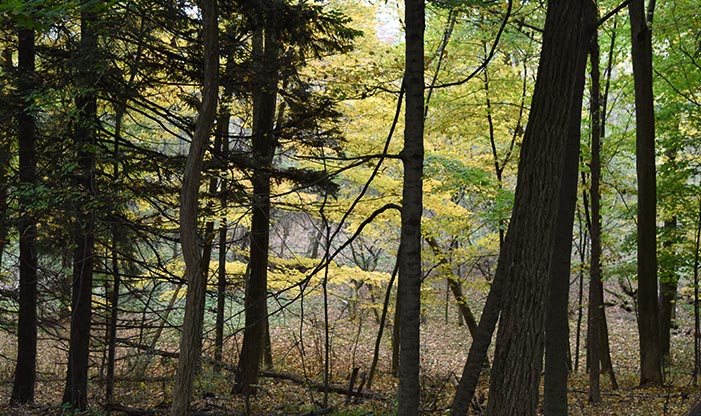Shinrin-Yoku, also called forest bathing or forest therapy, is more than just a stroll in the woods; it’s a bridge between us and the natural world. The goal is not to exercise or travel from point A to point B, but to open up all of the senses within nature.
The idea behind Shinrin-Yoku is very simple: it is the belief that if a person visits a natural area and explores it in a relaxed way, they can achieve physical and mental benefits that are healthy and restorative. It is a form of preventative health care that can be incorporated in nature settings anywhere.
How Shinrin-Yoku Works
Forest bathing differs from a typical hike because the focus is broadened beyond exploring nature. It blends meditation and astute focus on one’s surroundings. Phones and cameras are left behind, and talking is kept to a minimum, unless it is to thank a natural object for its existence, or to further connect with a plant or animal. Shinrin-Yoku is a form a mental therapy, a time to focus on what is happening around you in the present moment.
Time is spent opening the senses of sight, smell, touch, and hearing onto every aspect of the outdoors. An interesting tree along the trail can prompt a deep investigation into the feeling of its bark, the smell of its leaves, the small details left by a woodpecker or burrowing insect. One might ponder that this tree has been standing in this place longer than most of the participants on the hike have been alive. Observing the tree in this deep way can be therapeutic; this is the idea behind forest bathing.
A Stressed-Out Urban Species
The EPA has found that the average American spends 93% of their time indoors, which includes 6% of time spent in cars. By 2050, over 75% of the world’s roughly 9 billion people will live in urban areas. We’ve increasingly become an urban and indoor species, which makes the need to surround ourselves with trees even more crucial. When indoors, we typically focus our attention on screens, spending as much as 10 hours consuming media each day. All of these aspects of our modern lives have led to an escalation of stress, anxiety, and depression. Spending time outdoors in a natural environment can help reverse the effects of these daily intrusions, especially when participating in forest bathing.
Ancient and Modern Forest Connections
Shinrin-Yoku expresses an idea that has been known for millennia – how amazing being in nature can make people feel. The practice originated in Japan, a civilization built around forests. The Japanese national health program for Shinrin-Yoku started in 1982. The original method was based on the simple idea that being in a beautiful forest could be good for the people of Japan, and could aid in the campaign to protect Japan’s forest habitats. In the United States, forest therapy has grown exponentially in the last 30 years. It has been incorporated in U.S. military trauma treatment centers and through the Wounded Warrior project, as well as in national parks through the Office of Public Health.
From Feelings to Scientific Facts
These feelings grew into science through research conducted to determine if there was medical certitude in how forest bathing made people feel. Researchers investigated the before and after effects of forest bathing in comparison to subjects performing equivalent activities in urban or laboratory settings. Studies have provided a wealth of data showing that Shinrin-Yoku can positively affect mental health through lowering stress, improving concentration and memory, reducing depression symptoms, increasing energy, and improving sleep habits. It also can positively affect physical health through reducing blood pressure, lowering blood-sugar levels, and boosting the immune system.
The meditative experience of Shinrin-Yoku involves core routines that help relax the body and mind while deepening a connection to the natural world.


